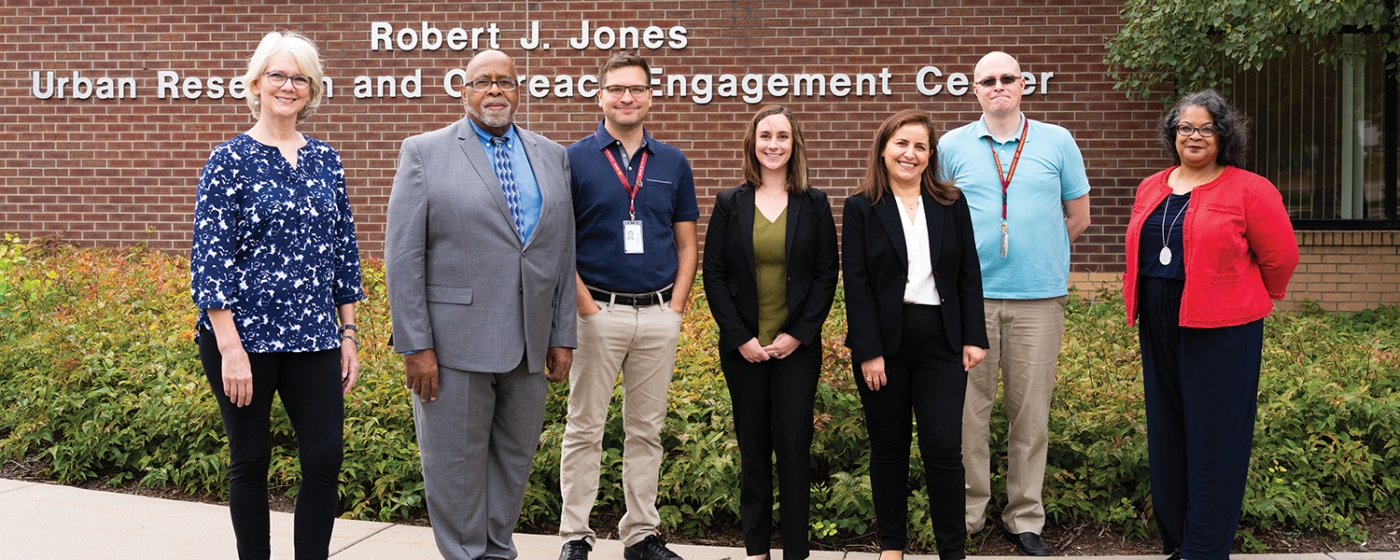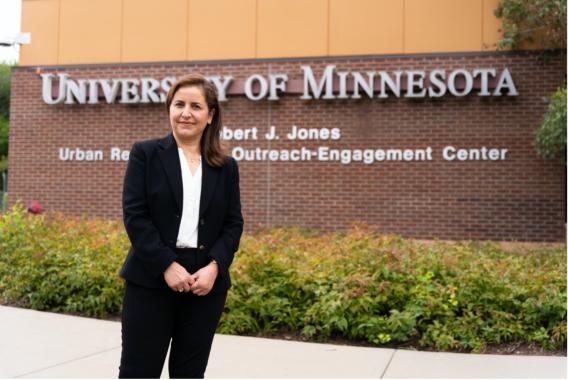Black Americans are twice as likely to experience a stroke and face worse outcomes compared to their white peers. But a new project is working to change that.
The CTSI-supported study aims to train “stroke champions” who can educate the rest of their community.
“By arming people with knowledge from voices they trust, we hope to reduce stroke disparities,” says Niloufar Hadidi, PhD, APRN, CNS-BC, FAHA, an Associate Professor with the School of Nursing at the University of Minnesota.
Partners at every level
Dr. Hadidi is conducting the study with her community partner, Clarence Jones, MEd, of Hue-MAN, with funding from a Community Health Collaborative Pilot Grant from the Community Engagement to Advance Research and Community Health (CEARCH) core in the CTSI. The grant supports University-community collaborative research on health issues identified by Minnesota communities who have been impacted by health disparities.
“It’s important that we do our research in a way that engages the community, and that we share our results so people can benefit from what we learned,” she added. “To make a difference in people’s lives, we’re getting them involved at every step.”
Hearing a need
The research team’s first step was a simple, yet powerful one — they listened.
“Almost everyone in my community knows someone who has had a stroke or a heart attack,” says Jones. “So many have struggled and suffered, and we want to know what can be done.”
Focus groups with Black Minnesotans revealed a community deeply affected by strokes, but struggling with barriers to healthy living and lacking trusted resources.
"Black communities experience many factors contributing to stroke risk that are going to take time to change, including stress related to racism, violence, and poverty,” says Dr. Hadidi. “For this project, we worked with the community to identify the types of information that would give them more control over their own health and inspire them to take action."

Searching for a common language
Sessions also uncovered deep disconnects between Black patients and their healthcare providers. Attendees repeatedly explained how and why they feel distrustful and unheard during their medical visits.
“Sometimes, as healthcare professionals, we’re speaking a different language than the language of those we’re serving. That can be intimidating, so patients don’t ask questions,” Dr. Hadidi said. “Other times, the disconnect comes because of the circumstance. If you’re given a diagnosis like hypertension, you’re instantly overwhelmed by that, so it’s challenging to receive and respond to a lot of information in that moment.”
To make matters worse, Dr. Hadidi says the healthcare system doesn’t always handle patients’ follow-up questions efficiently:
“For example, you get a diagnosis, and then a question pops into your head when you get home. What can you do then? If you call the clinic, you may not hear back for days. And when you do, you’re probably not talking with your provider — you’re talking to a triage nurse who doesn’t know all the details of your situation. It’s frustrating.”
Building a better connection
The team sought to develop a resource that could answer patients’ questions at any time, and asked the focus group about the best way to provide that information. Their answer was loud and clear: Create a website.
In response, Dr. Hadidi and her School of Nursing colleagues created Healthy Engaged Lifestyle to Prevent Stroke (HELPS). The website provides clear information about strokes, from prevention to warning signs. It also includes three learning modules focused on blood pressure, blood sugar, and blood cholesterol.
“Many resources on our website were identified by focus group participants themselves,” Dr. Hadidi said. “These resources stem from strengths they see within their own communities, ranging from community gardens to the YMCA to smoking cessation programs.”

Faster approval, faster results
Throughout the study, the research team frequently turned to experts from the Clinical Research Support Center (CRSC), a center from CTSI and partners to help University of Minnesota investigators navigate the complex clinical research environment and set up their studies for success.
For example, they tapped into the CRSC’s free, award-winning feasibility review service to get guidance on strengthening their protocol prior to submitting it to the IRB.
“After we drafted our protocol, the CRSC reviewed it and their feedback was very comprehensive,” says Dr. Hadidi. “Every reviewer had expertise in a different area of research, and they each identified potential issues with the protocol and shared concrete recommendations on how it could be improved.”
Experts weighed in on topics ranging from statistics and study design to recruitment and consent, and helped tackle some of the more complicated details of the protocol, such as the use of both in-person and virtual focus groups in study’s first of two phases.
This guidance helped reduce the number of protocol-related IRB stipulations, says Dr. Hadidi:
“When we submitted our protocol to the IRB, it was approved without questions and there was only one stipulation for the first phase of the study. The IRB had zero stipulations for the study’s second phase, which almost never happens. The fact that there were so many instruments and they still had no questions is a testament to the protocol’s clarity.”
With start-up support from the CRSC, the study’s first phase was approved swiftly — in under a month — and ultimately streamlined the study’s early steps.
Social influencing to stop strokes
Now, the research team is recruiting community influencers dubbed stroke champions as part of the second phase of their study. Stroke champions will enroll in a stroke education class then share what they learn with others.
“People have to be able to relate to information in order to make a decision, and community members need to see that they’re part of the picture,” says Jones. “When stroke champions from within our community are out there repeating the important messages and having authentic conversations, that’s what will make an impact. And, as a community member, that’s why I’m hopeful.”
The idea is that conversations ensue and the information spreads, attuning an underserved and at-risk community to the realities of stroke prevention.
“Ultimately, research is about helping the community,” says Dr. Hadidi. “By building trust and sharing what we know about strokes, we’ll be empowering people to make a difference in their own lives and in the lives of those around them.”
